We may earn money or products from the companies mentioned in this post. This means if you click on the link and purchase the item, I will receive a small commission at no extra cost to you ... you're just helping re-supply our family's travel fund.
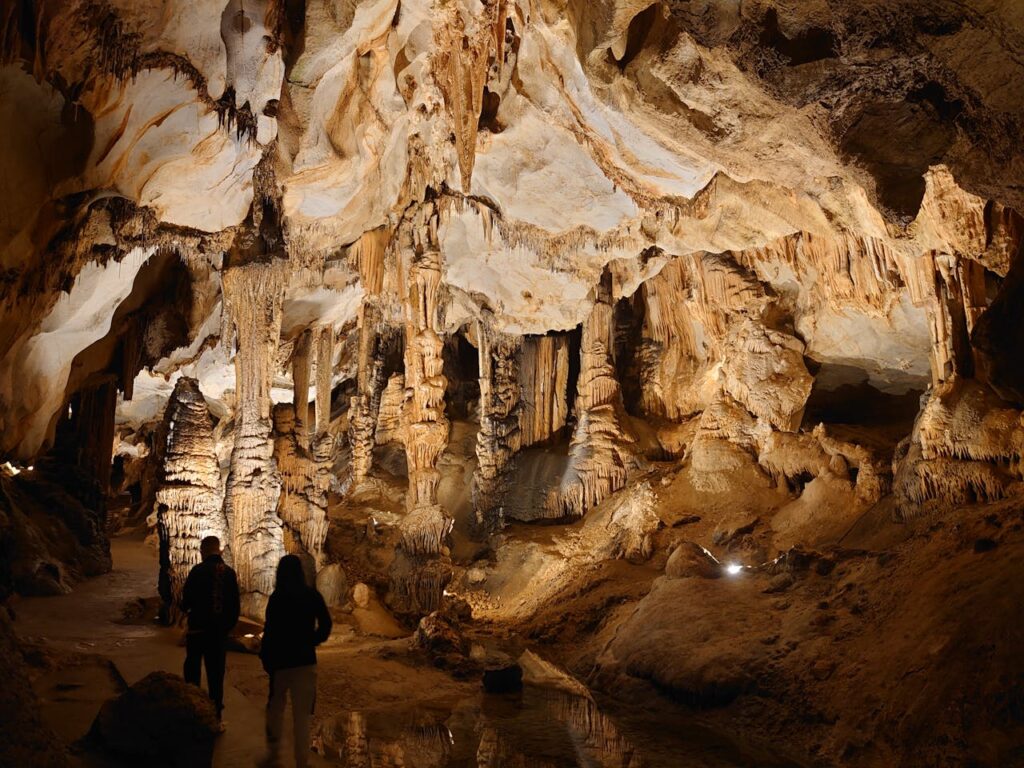
Under the endless blue of the Chihuahuan Desert, you feel heat rising from rust-colored earth while the Guadalupe Mountains stand watch on the horizon. At Carlsbad Caverns you swap sun for stone, trading bright desert air for the cool hush waiting 750 feet below. In a single day you track geology across millions of years, share lunch in an underground hall, and finish with a sky full of bats. What follows walks you step by step through that unforgettable arc of light and dark.
Begin at the Visitor Center
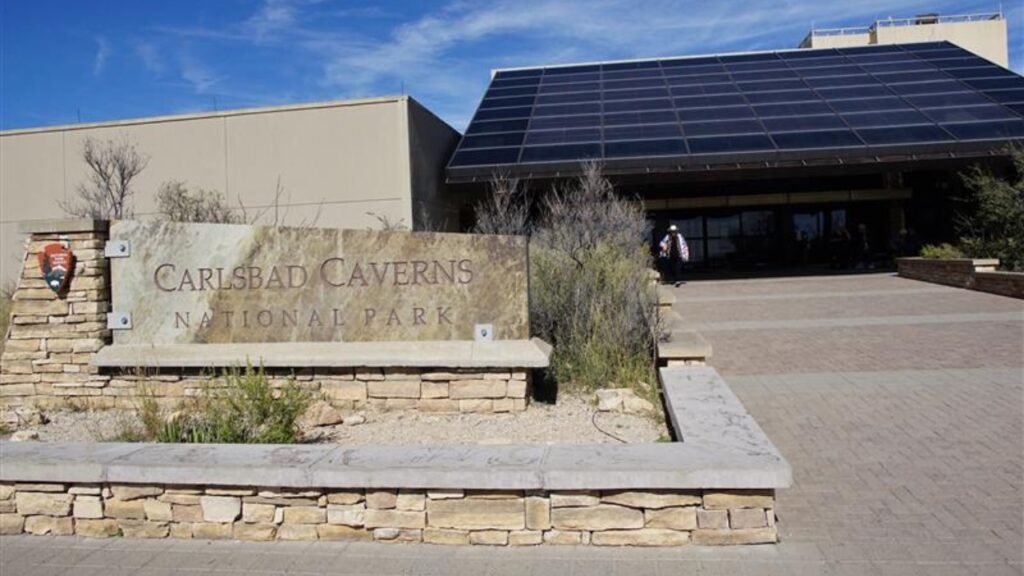
Walk through sliding glass doors into a space that blends museum, ranger station, and staging area. Exhibits explain how an ancient reef became limestone, then how sulfuric acid hollowed that rock into passageways. A five minute film orients you to the scale of what lies beneath. Secure your timed entry ticket, fill your water bottle, and study the relief map that stretches across a wall. When you step back outside for the short walk to the natural entrance, desert heat feels sharper and you already crave the cave’s steady 56 degrees.
Descend the Natural Entrance Trail
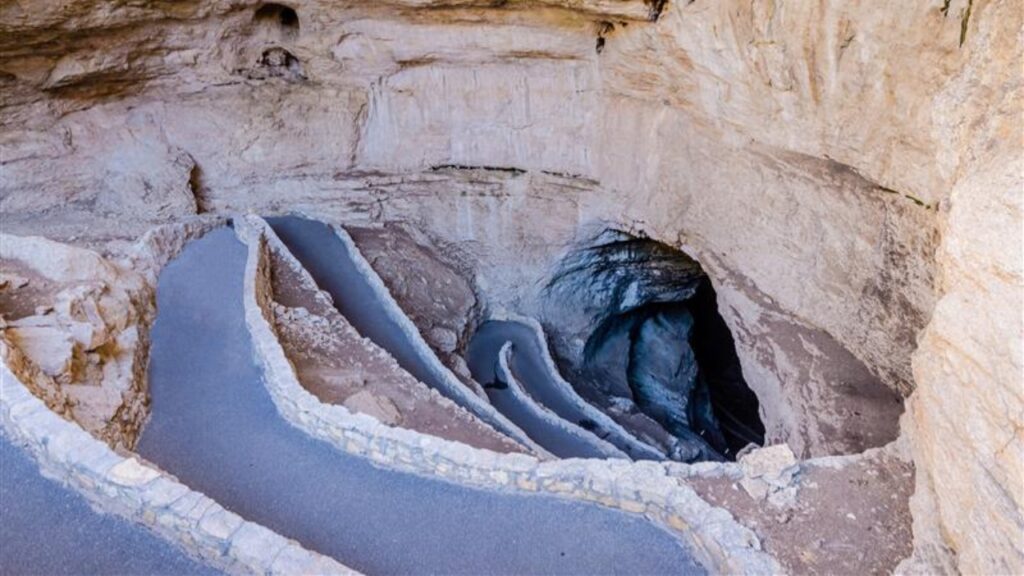
Follow the paved trail as it curls one and a quarter miles into the earth, dropping the height of a seventy five story building. Sunlight filters through a mouth ninety feet wide, then drains away until you step into half light. Switchbacks reveal formations named Devil’s Spring, Whale’s Mouth, and Iceberg Rock, each marked by subtle lighting. The air cools to a constant 56 degrees and amplifies every footstep, so conversation lowers to a whisper. By the bottom you have traveled back in time and left the desert far above your head.
Explore the Big Room
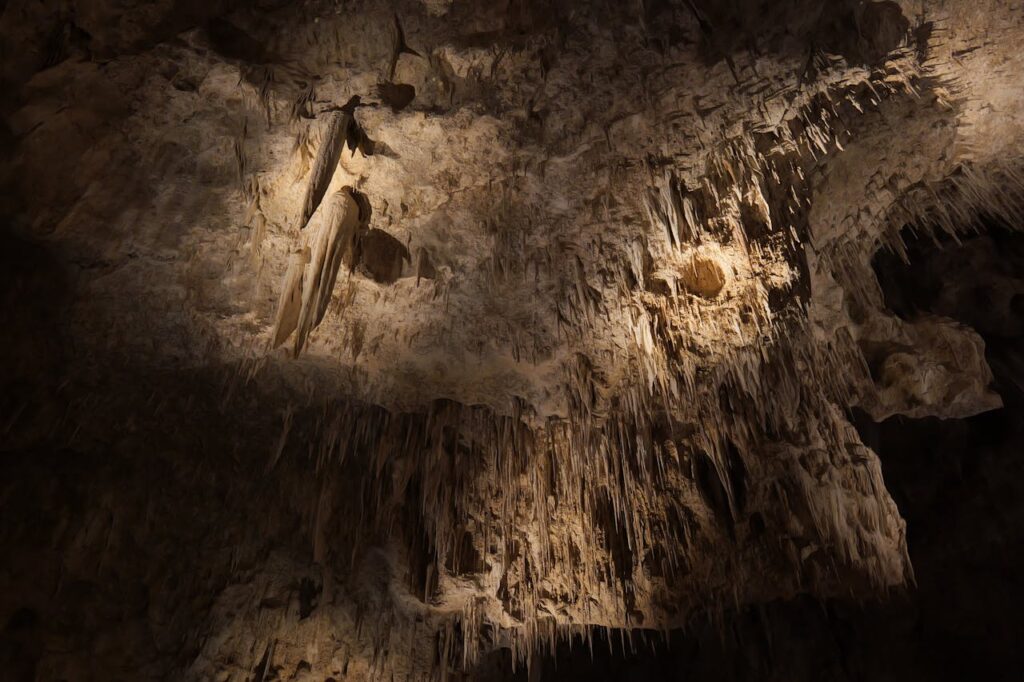
The Big Room opens like a hidden stadium, thirty three acres under one roof with a ceiling higher than the Statue of Liberty. A smooth trail loops for more than a mile past curtains of calcite, thin soda straws that clink when touched by a drop of water, and stalagmites that resemble silent organ pipes. Soft LED lights reveal warm ocher, chalk white, and hints of lavender where minerals mingle. Walk slowly. Every few steps the chamber rearranges itself, shapes sliding in and out of shadow, until you forget the surface world exists at all.
Underground Lunchroom
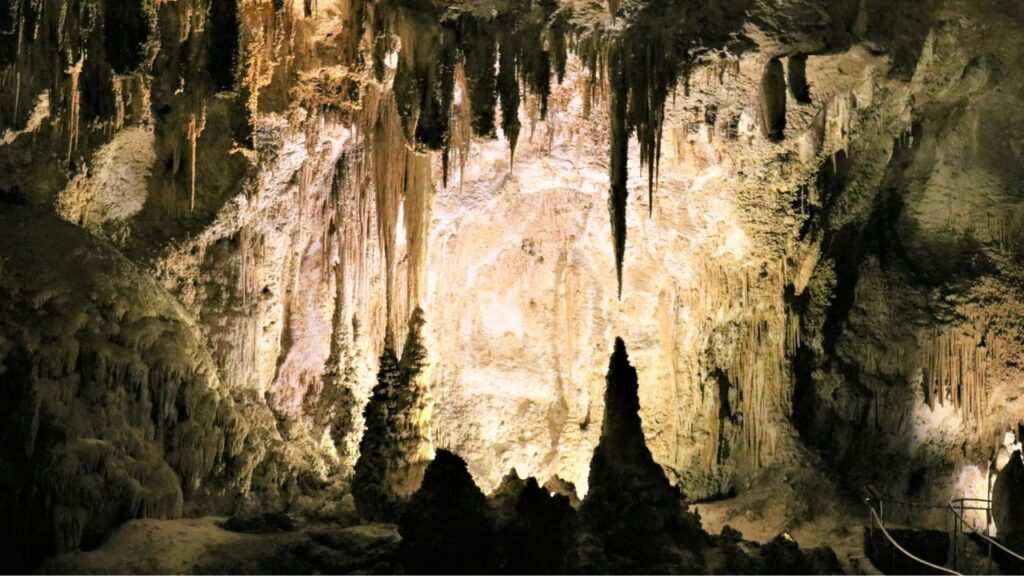
A final turn brings you to the Underground Lunchroom, one of the strangest dining halls on the planet. Stone tables and metal chairs sit beneath a vaulted ceiling, their surfaces damp with the cave’s constant humidity. Order a simple sandwich or salad from the small concession window, then write a postcard from 750 feet below ground and drop it in the mailbox. Voices soften out of respect for the surroundings, and the smell of bread mingles with mineral rich air. After eating, stretch before choosing the elevator or trail back to the surface.
Bottomless Pit
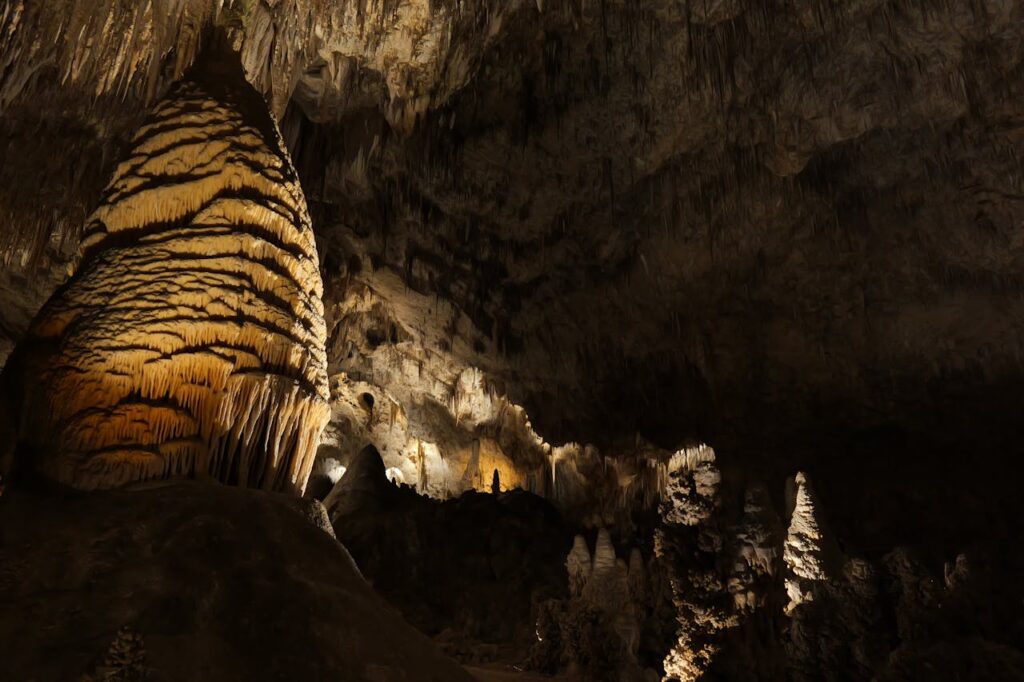
Soon you reach a railing that guards the edge of the Bottomless Pit. Early explorers rolled rocks into the void and heard nothing, convinced the drop had no end. Modern mapping shows a depth of 140 feet, yet the blackness still unsettles the mind. Aim your flashlight down and the beam fades before reaching the floor. Steady your breathing and imagine exploring this darkness with only a candle and rope. The pit reminds you how much of the cave remains hidden from casual view.
Bat Flight Program
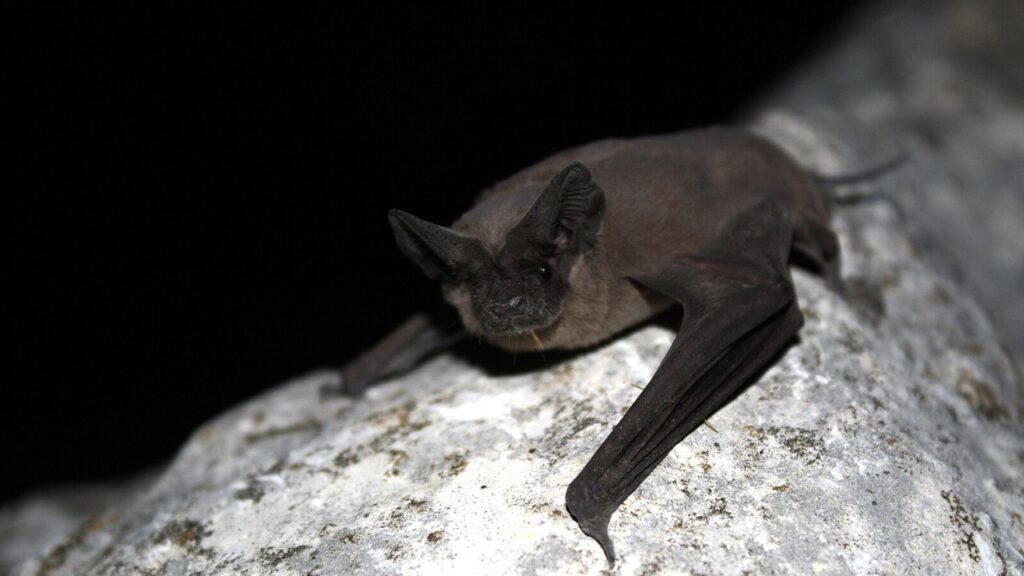
Surface sunlight has returned by the time you claim a seat in the natural entrance amphitheater. From April through October a ranger speaks briefly about Brazilian free tailed bats and then asks for silence. Dusk thickens, and the colony pours from the mouth of the cave in a swirling ribbon that seems to paint the sky. The exodus lasts twenty to thirty minutes, the bats forming loose spirals before scattering into the desert to feed. When the last stragglers depart, stars appear, and you feel both small and deeply connected to the living landscape.